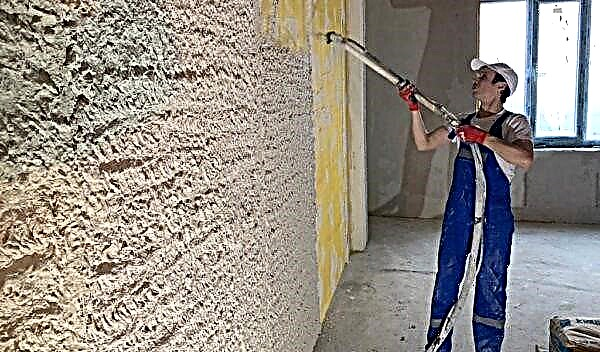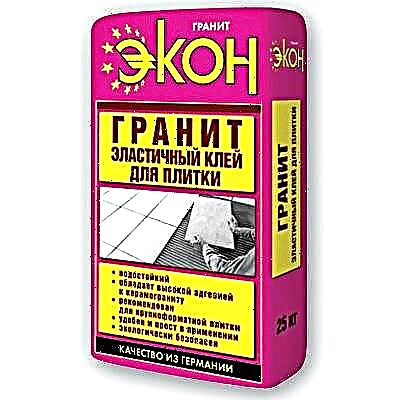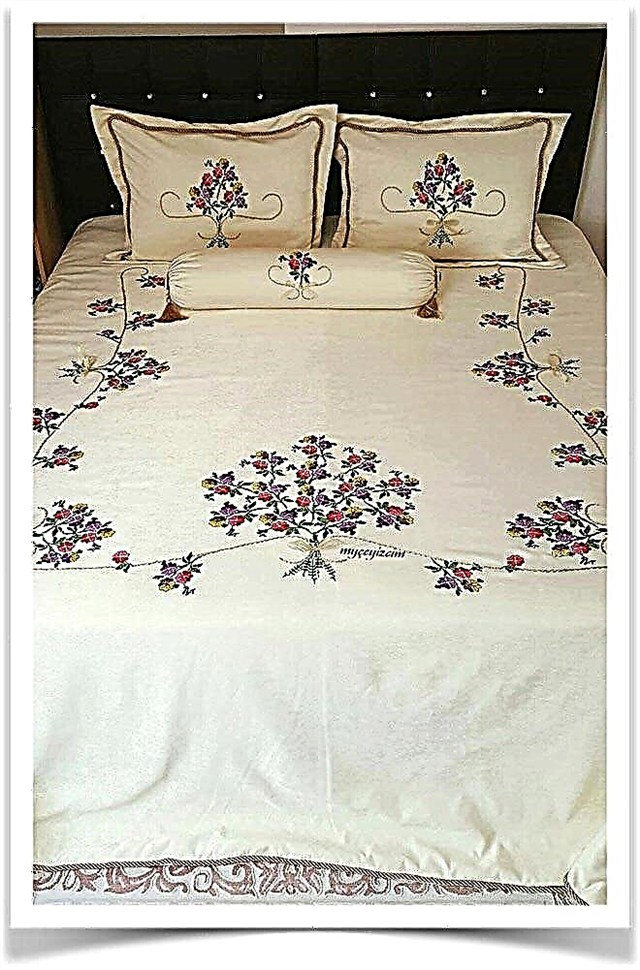When buying an apartment or conducting scheduled repairs, many are faced with the problem of uneven walls. If in new buildings the deviation usually does not exceed 10-15 mm, then in panel houses built in the Soviet era, often the numbers come out fantastic.
In order to calculate in advance the necessary amount that will be required for finishing the premises or to control unscrupulous specialists who greatly overstate the price of materials, our team developed special plaster consumption calculator for walls by area. You are very fast - in a couple of clicks, get correct calculationsthat you can safely use when traveling to a construction store.
The online calculator for calculating plaster KALK.PRO saves you from cumbersome calculations and greatly simplifies the preparatory work. We gathered in one place a large base of all types of finishing materials and learned from manufacturers what characteristics they possess. The whole process is automated, and you do not need to spend personal time.
Operating procedure:
- indicate the length and height of the wall, m,
- set the calculated average thickness of the plaster, mm,
- select the type of plaster (gypsum, cement, decorative ...),
- if necessary, you can specify the weight of the bag,
- Click the button “Calculate”.
As a result, you will find out how many kilograms of stucco of the selected type you will need to finish one wall. If you indicated the weight of one bag, you will get their necessary quantity.
Easy calculations and successful construction!
Plaster consumption rate per 1 m2 of wall
There are not so many factors affecting consumption. First of all, this, of course, the curvature of the wall. The more bumps, the more materials will be required. Secondly, it all depends on the type of plaster mix and the manufacturer.
To fill out the table, we were guided by the technical characteristics of each individual brand below the manufacturers listed.
Plaster mix
Approximate Consumption, kg / m 2
Consumption of decorative plaster Bark beetle CEREZIT per 1 m2
Dry bark beetle mixture Ceresit CT-35, CT-35 Winter, grain size 2.5 mm
Bark beetle Ceresit CT-35, grain size 3.5 mm
Acrylic decorative "Bark beetle" Ceresit CT-63 3.0 mm
Acrylic "Bark beetle" Ceresit CT-64, grain 1,5 mm
Acrylic "Bark beetle" Ceresit CT-64, grain 2 mm
Silicone "Bark beetle" Ceresit CT-75, grain 2.0 mm
Silicate Bark beetle Ceresit CT-73, grain size 2.0 mm
Silicate-silicone "Bark beetle" Ceresit CT-73, grain 2.0 mm
Bergauf consumption, for a layer of 10 mm
BAU PUTZ ZEMENT
EASY PLASTER, for beginners
PRIMA PUTZ GIPS
In order to correctly calculate the average thickness of the plaster layer , you will need to buy or make special devices yourself - beacons . These are certain metal (rarely plastic) profiles with a thickness of 6/10 mm, which are sold in any specialized store. If you are going to plaster the walls for wallpaper, then the 6 mm option is suitable for you, if for tiles, then choose a thicker one.
Visually divide the wall surface into equal vertical parts 1.5 meters wide and, for convenience, make marks to do not forget their location.
We choose the corner of the room we like and on the line closest to it, we make 5 patches of stucco mortar, evenly distributed over the entire height. We take the beacon and put it in the plaster until the first touch of the wall, at the same time check the level so that it stands strictly upright. We repeat the procedure for everyone else until we reach a different angle.
Then, for each profile, you need to find three points equally spaced from each other (top, middle, bottom). We measure at each point, so far the lighthouse is located from the wall and record. Add all the values and divide by their number. We do the same with others and find the arithmetic mean already for the entire wall. It will be average value plaster thickness.
Calculation example
Suppose that we will repair a room with parameters 4x3x3.5m (LxWxH).
We took 3 beacons in length and 2 in width. The values were as follows (12,0,15, 12,0,15, 12,0,15 - long side, 27,0,30, 27,0,30 - short). To facilitate the calculations, suppose that the opposite partitions are the same and the situation on the profiles is exactly the same, although in practice this will be absolutely not so.
Based on these figures, it can be understood that the zero mark, where the lighthouse is in contact with the wall, will be in the middle, and the walls are curved outward from above and below.
- for a long wall, the average thickness of the plaster (12 + 0 + 15) / 3 = 9 mm,
- for the narrow side (27 + 0 + 30) / 3 = 19 mm.
The standard flow rate per 1 m 2 of walls is usually specified by the manufacturer with a coating thickness of 10 mm. In ordinary gypsum, this figure is 9 kg / m 2. Then, in order to calculate the mass of plaster for one wall, it is necessary to find its area and the standard value of the flow.
- long wall - (4 mx 2.5 m) x (0.9 mm x 9 kg / m 2) = 81 kg,
- short wall - (3 mx 2.5 m) x (0.9 mm x 9 kg / m 2) = 60.75 = 61 kg
- for all walls - 81 kg x 2 + 61 kg x 2 = 284 kg.
What regulatory documents should be used in the calculation
Standards for plastering walls have been compiled for a long time and years later have been repeatedly tested in practice by many builders. To determine the material consumption per 1 m 2, only 2 regulatory documents will be required, namely:
- SNiP 3.04.01-87. The standards are specially designed to determine the thickness and quality of both insulating and finishing coatings.
- Normative indicators of material consumption (NPRM) Collection 15.02 Plastering. The collection is quite extensive and recommended by the State Construction Committee of Russia as an information material for the development of construction estimates. The norms and types of finishing materials for any surface are given.
Many of the data specified in SNiP 3.04.01-87 or in the more current version of SP 71.13330.2017 is also available in the NPRM, but in an abridged version. More to calculate the consumption of regulatory documents is not required.
Recommended conditions before starting work
The consumption specified in the normative documentation is relevant for certain environmental conditions both indoors and outside. Before embarking on finishing work, make sure that:
- The temperature in the room is at least 10 0. Humidity - not more than 60%.
- The room is prepared for plastering. To do this, it is necessary to maintain the nominal temperature in it for 2 days before work and 12 days after.

Brick wall preparation and plastering
Only subject to the above conditions, the consumption of plaster per 1m 2 will not exceed that stated in the regulatory documentation.
Permissible thickness of the plaster
To determine such an important parameter as the permissible thickness of the plastered layer, you should look at table 10 of SNiPa 3.04.01-87.
Technical requirements of the regulatory document:
- The layer thickness when plastering the walls in one layer, for all categories of finishing materials except gypsum, should be 20 mm. When using gypsum-based solutions - 15 mm.
- Thickness at spray stone, brick, concrete walls in several layers - 5 mm. Wooden - no more than 9 mm.

The first stage of plastering. Concrete wall spray
Cover layer when plastering the surface should be no more than 2 mm, but only if it is not a decorative finish - then it is allowed to make it 7 mm.
Calculation of the required amount of mixture
The required amount of material for plastering can be determined by this technique. It is necessary to calculate the average layer thickness for a wall with an area of 12.5 m 2. First, the wall is hung in several places, the more they are done, the more accurate the result will be. The results obtained on the curvature of the wall, for example, 1, 4, 2 cm, need to be added and divided by the number of sag, in our case, three. We get the middle layer (1 + 4 + 2) / 3 = 2.33 cm.
Now you need to calculate the average consumption per square meter and the total amount of material. If you chose the “Volma-layer” for plastering, which has a consumption of 9 kg / m 2, then we get 9 * 2.33 = 20.97 kg, this is the average consumption. We multiply it by a total area of 12.5 m 2, 12.5 * 20.97 = 262.1 kg.
The mixture is sold in 30 kg bags, so we consider how many bags you need to buy: 262/30 = 8.73. We round the resulting result and get 9 bags. Now it’s easier to calculate how much you need to count on to plaster the wall. You can use the online calculator on the network for calculation.
Mixture consumption per 1 m 2 surface
In the collection 15.02 NPRM you will find all the tables with the consumption rates of various types of plasters (lime, cement, cement-lime mortar). For ease of understanding, its GOST is indicated next to the solution, the consumption of mesh, gypsum and dowels is also given. The inconvenience arises when calculating the amount of mixture per 1 m 2 when the data are indicated in relation to 1 m 3/100 m 2 area.
Consumption per 1 m 2 with the condition that the material is applied in one layer (layer thickness - 1 cm):
- Gypsum - 9 kg.
- Cement or cement-lime mortar - 17 kg.
- "Rothband." The main difference between the mixture and the standard gypsum mortar is the presence of setting-improving additives. The consumption of the Rotband mixture per 1 m 2 is 8.5 kg.
- The bark beetle. "Bark beetle" is often used in the decoration of building facades and much less often - indoors. This type of plaster has several varieties, but its average consumption is 3 kg per 1 m 2.
- Volma. Plaster "Volma" is popular because of the variety of products - it has at least 22 types. One of the most common is the “Volma-layer”, and its consumption is from 8 kg.
- Venetian plaster. More suitable as a putty option, since its layer should be very thin, so the consumption of the "Venetian" is as economical as possible: 200 g per 1 m 2.

Consumption per square meter for some types of plasters
Important! If the surface is too deformed or there are cracks and potholes, add a certain amount of material to the already calculated one. Sometimes it’s just enough to round up the number of estimates in a larger direction, if it is not integer.
Gypsum plaster according to GOST
Now the most popular mixes for plastering rooms are performed on the basis of such a universal building material as gypsum. But not all manufacturing companies, due to the constant saving of constituent materials, strictly follow the GOST letter. The main regulatory document, which accurately indicates the requirements for the production of gypsum mixture, is GOST R 57957-2017.
The following are available in GOST:
- Designations.
- Types of gypsum plasters.
- Marking and packaging.
- The values of thermal conductivity of the material after solidification.

Composition of gypsum plaster
But most often, buyers are not interested in the composition of the plaster, but in its proportions. To find out the components of a dry gypsum mixture, just look at GOST 31377-2008, which lists all the requirements for this product in sequence:
- In a dry mixture, the presence of grains larger than 5 mm is not allowed. GOST permits the presence of grains with a size of 1.25 mm - not more than 1%, 0.2 cm - not more than 12% and 0.125 - not more than 15%.
- Gypsum, which is added to the dry mixture, must be made in accordance with GOST 125.
- After adding water to the dry mixture, the setting of the resulting solution should occur with manual application in at least 45 minutes. When using any application technique, in not less than 90 minutes.
- Water retention should not be lower than 95%.
Important! If this GOST is indicated on the box of the purchased mixture, but the quality of the plaster, its hardening time or other characteristics do not meet the requirements of the normative document, then each buyer has the right to receive monetary compensation.
Stucco Knauf Rotband
Knauf Rotband is very popular among craftsmen. Firstly, because of its versatility (suitable for concrete, brick, cement surfaces, as well as for gypsum partitions). Secondly, because of its affordable price.
When buying KNAUF-Rotband plaster, you should not pay attention to its color, since such products can be white, gray or pink. Different colors and shades of the mixture give polymer additives, which are mixed with the main ingredients specifically to give good stickiness to the finished solution.

The consumption of Rotband is much less than cement-based mortars, since gypsum predominates in these products. 8.5 kg of the mixture is enough to cover an area of 1 mm 2. The drying of a layer 1 cm thick takes place in no more than 1 hour, but for a complete set of strength the plaster should be allowed to infuse for at least 7 days.
Gypsum solutions are whimsical to some nuances, so the Rotband has several minor drawbacks:
- The Rotband plaster layer is inferior in strength to the same layer, but based on the cement component.
- It quickly enters the process with metal parts (nails, screws, screws, screws), which leads to their rust. Therefore, yellow stains may appear on the plastered surface over time.
- It is better not to apply Rotband in rooms with high humidity.
Important! The market for building materials is filled with fakes, which in their appearance and cost are practically no different from the original. The main sign of Knauf Rotband artificial plaster is the presence of sand in the package. Such a product should be immediately returned to the seller!
Factors Affecting Plaster Consumption
In their classification there are two main, which have the greatest impact on the amount of expendable material.
When making calculations, it is taken into account:
- wall curvature
- type of plaster mix.
From the indicators of wall deviations in the vertical and horizontal plane, how much plaster is needed to maximize the leveling of the surface depends. Curvature may reach up to 2-2.5 cm -indicator of typical new buildings.
it develops negatively on the costs of building materials. Houses from the old school are either smooth walls or frequent bumps.
Each type of mortar has its own consumption rate, depending on the manufacturer or composition.
How to calculate the layer thickness?

Before starting work, the outcome of the repair depends on determining the plaster consumption. It should be borne in mind that plaster mortar contains a certain percentage of fluid reacting with astringent components. This increases the specific gravity of the mixture.
For a competent calculation should:
- The surface to be used for plastering is thoroughly cleaned of dust.
- The wall hangs - beacons are set on the level or special rails (for one face there should be at least 3 of them).
- Key points are defined. Of these, measurements of deviations along the faces will be carried out - the result will be more accurate if there are more such points.
- Plane deviations are measured, the obtained values are summed. The amount is divided by the number of beacons.
If you take as an example a wall with an area of 10 sq.m. with beacons in three places and deviations of 2, 4, 6 cm, it turns out (2+4+6) : 3 = 4. The thickness of the layer that will be applied to the surface should be 4 cm.
Consumption rates per square meter

Approximate consumption of plaster mix for 1 sq.m. and a coating thickness of 1 cm is already determined by the manufacturer. On the packaging with plaster is indicated consumption per layer of 10 mm - about 8.5 kg, which depends on the brand of material.
For calculation in bags with a normal filling of 30 kg, 8.5 need to be divided by 30 kg - we get 0.28. For 1 sq.m. surface with a coating thickness of 1 cm will leave almost a third bag of plaster.
Calculation for a coating thickness of 2 cm:
We focus on the data indicated by the manufacturer on the packaging with the material. If the norm for 1 m2 8.5 kg is indicated for a coating 1 cm thick, multiply 8.5 kg by 2 and we get the material consumption rate for a thickness of 2 cm - 17 kg.
We determine how much it is in bags with a standard release of 1 bag = 30 kg. To do this, divide 17 kg by 30 and get 0.57 bags.
Calculation for a coating thickness of 3 cm:
We look at the technical specifications indicated on the packaging with plaster. With a consumption of 8.5 kg for 1 m2 and a coating thickness of 1 cm, the norm for a thickness of 3 cm can be calculated. Multiply 8.5 kg by 3 and we get 25.5 kg - the consumption rate for a layer thickness of 3 cm, this is almost a whole bag of mixture.
When making calculations, it costs take into account the fact that some part of the material will go to errors, and in fact it will need a little more.
You might be interested in learning about fiber cement panels for facade decoration. Read this article.
Calculation procedure for different types of mixtures

Consumption rates depend not only on the manufacturer and brand of the material, but also on its type and texture. When making calculations, it is recommended to focus on their features, including.
Plaster decorative "Bark beetle" for walls:
Here, the calculation method is different, different from the rest of the species. The value will depend not only on the thickness of the layer, but also sizes of filler. It is not entirely accurate - the resulting number is needed multiply by 5-10%, to get the right amount:
- for a fraction of 1 mm - 2.4-3 kg / m2,
- fractions of 2 mm - 5-6 kg / m2,
- fractions of 3 mm - 7-9 kg / m2.
The thickness of the working surface will be from 10 mm to 30 mm.
Cement plaster for the facade of the bark beetle texture:
A cement-based plaster mortar of bark beetle texture is used as a finishing layer for finishing the facade of the building. She earned her recognition thanks good quality indicators - strength and moisture resistance, and economical consumption.
To cover 1 m2 of the working surface with a bark beetle texture, 3 kg of mixture is required with a layer thickness of 1 cm. If it is necessary to calculate for a larger value, multiply 3 kg by the layer thickness in mm and get the desired numerical value.
Gypsum plaster "Rotband":
Application and consumption of gypsum plaster.
The consumption of dry stucco mixture with gypsum binding “Rotband” is determined by manufacturers and indicated on the packaging with the material.
For manual application, you will need 8.5 kg of gypsum plaster on 1 m2 of surface with a thickness of 10 mm. If the layer thickness is more - multiply it in mm by 8.5 kg and get the required value.
Venetian stucco mixture:
It is rarely used, but it looks beautiful thanks to the marble texture. Consumption per 1 m2 will depend on the thickness of the layer:
- for 1 cm - 70 g,
- for 2 cm - 140 g,
- for 3 cm - 210 g.
Skills proper material calculation - your opportunity to spend it economically save your time and financial resources.
2 comments
Competently. When sanding putty, leveling the walls, please do not forget to purchase a Heather Beaver dust extractor. Do not breathe dust, this is the last century, even with a respirator in the lungs a lot of fine dust settles, then there will be health problems. Do not believe me - google it.
a simple question is how much cement mix is needed for plastering 10 sq.m. walls in the shower.



